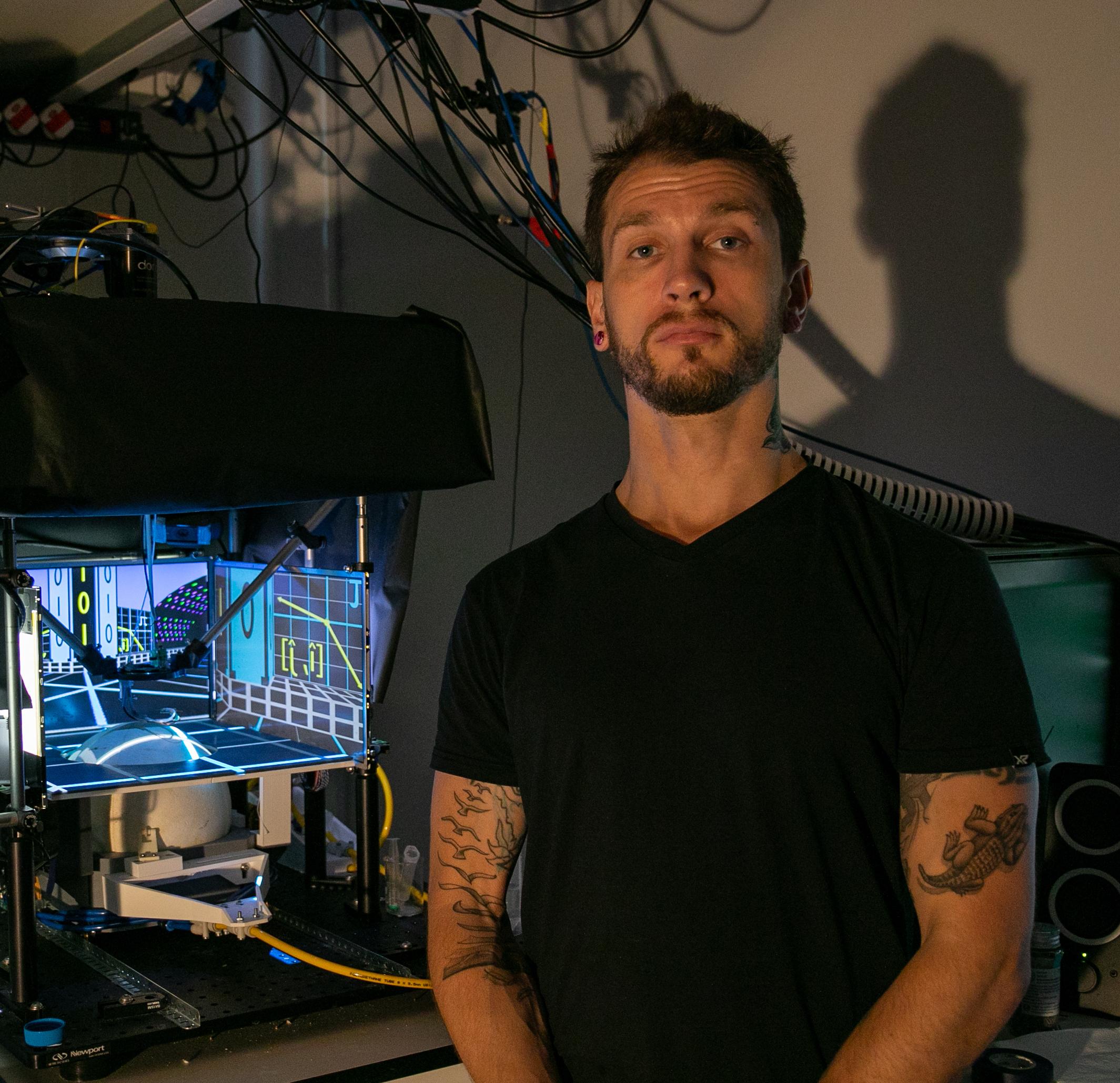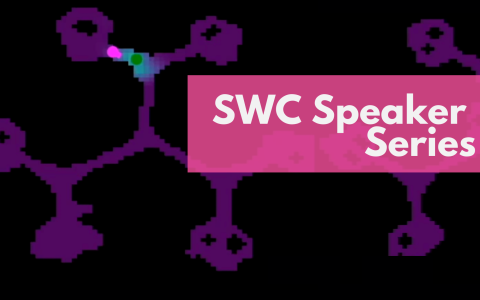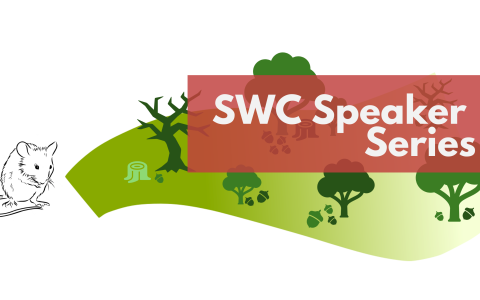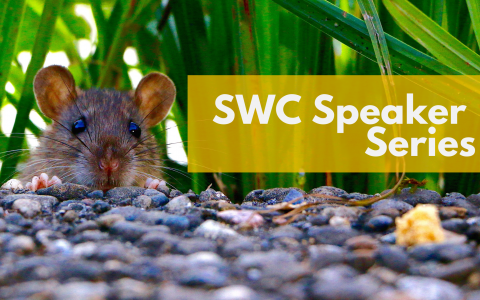
Is the grass greener? Exploring how the brain decides when to move on
By April Cashin-Garbutt
How do you decide whether to persist with what you’re doing or switch to something else? Neuroscientists believe that the answer to this question may lie in a canonical computation in the brain that guides behaviour under uncertainty.
To explore this possibility, SWC Senior Research Fellow Dr Michael Bukwich has been studying how animals allocate more time to foraging in locations where they can acquire more resources.
Studying patch foraging in mice using virtual reality
To effectively compete with other animals for resources, individuals need to forage efficiently. In nature, resources are not distributed uniformly; instead, they tend to be clustered in patches. These patches are not infinite and deplete as resources are consumed.
“Animals have evolved neural machinery that compels them to leave a patch when they feel it is no longer profitable. We wanted to understand how mice implement the decision to leave when the environment is uncertain and always changing. How does the brain solve this question?” said Dr Bukwich.
To explore the underlying mechanism, Dr Bukwich developed a virtual foraging task for mice during his PhD work in the Uchida Lab at Harvard University. While running on a treadmill, mice were presented with a virtual world on computer screens. This setup allowed researchers to present mice with multiple foraging patches with varying levels of reward.
The rewards presented to the mice were probabilistic, and just like in nature, the probability of receiving a reward decreased over time as the resources depleted. This allowed the team to study how mice make decisions about when to leave a patch.
Weighing time and reward through value integration
In a new paper, published in Neuron, the team outlined how a mathematical model, called an integrator model, could explain the way the brain enables animals to decide when to leave a foraging patch and how this leads to them spending more time in high-value patches.
“An integrator process can dynamically track value. Over time, as no rewards are consumed, the integrator value ramps upwards until it hits a threshold level that tells the animal to leave the resource. Critically, every time the animal receives a reward, it knocks the integrator down in value further away from the threshold. A byproduct of this is that animals spend more time in patches with more rewards, as the integrator value keeps being knocked away from the threshold to leave,” explained Dr Bukwich.

Dr Michael Bukwich in the laboratory.
Investigating the role of the frontal cortex
To investigate whether an integrator model is truly responsible for how the brain decides when to leave a foraging patch, Dr Bukwich and the team recorded from the frontal cortex and subcortical areas below using Neuropixels, state-of-the-art electrodes for simultaneous neural recordings first released in 2017.
“What my co-author Malcolm Campbell and I found in the brain nicely matched these integrator models. We were able to decode value signals predicted by the integrator models in frontal cortex population activity. We observed neurons that were ramping up without rewards coming, and then knocked back down when a reward happened,” commented Dr Bukwich.
Individual differences in patience
Interestingly, while the researchers found that almost every mouse was value-based, in that they spent more time in resource-rich patches, the variance across mice, in terms of how long they would wait, differed significantly.
“We found a striking difference between how long mice would wait at a patch. The most impulsive mice would wait around 2-3 seconds, whereas the most patient mice waited a whole order of magnitude longer, around 20-30 seconds!” exclaimed Dr Bukwich.
After plotting the data on a log-scale, the team realised that this behaviour could be explained by a single integrator model, scaled by a multiplier representing the patience of each mouse. The team were able to use this same equation to predict the behaviour of both the highly impulsive and highly patient mice.
Exploring further at SWC
During his time as a postdoctoral researcher at SWC, Dr Bukwich has been working with Professors Neil Burgess and Caswell Barry, whose labs predominantly focus on spatial navigation.
Value-based decision-making and spatial navigation are often fields that are kept quite separate; however, Dr Bukwich has found a way to bridge the gap.
The team have started a new foraging paradigm using the VR system at SWC, which builds upon the previous work at Harvard University. While in the Uchida Lab, Dr Bukwich used a 1D treadmill, whereas the VR setup in the Burgess Lab is enabling him to explore the spatial component in 2D.
“With Neil’s 2D-VR system we are able to ask not only how does a mouse know when to leave, but where do they go when they make that decision. The behaviour that we are seeing so far is very promising, and I’m really excited to continue this project,” concluded Dr Bukwich.
The team hope that this research will help them to understand how individual decisions, such as leaving a patch, can be hierarchically nested within bigger decisions such as leaving a broader environment.
Because this work sheds light on the neural processes underlying patient and impulsive decisions, it could also one day lead to a greater understanding of why impulsive choices are sometimes made by individuals with Attention Deficit Hyperactivity Disorder (ADHD).
Find out more
- Read the paper in Neuron, ‘Competitive integration of time and reward explains value-sensitive foraging decisions and frontal cortex ramping dynamics’ DOI: 10.1016/j.neuron.2025.07.008
- Learn more about research in the Burgess Lab and Barry Lab
- Read more about Michael Bukwich in UCL’s Meet the Expert article


